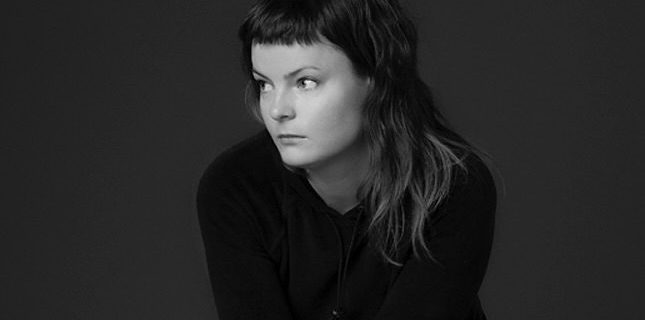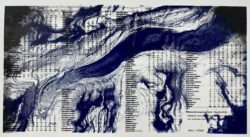 Artist Maria Sjöfn Dupuis Laufeyjardóttir´s two-month residency at Skaftfell was devoted to studying the marine animals that live in Seyðisfjördur. Her research was in response to a recently published report on the impact of sea fish faring on the ecosystem of the fjord: Rannsóknir á lífríki Seyðisfjarðar: [Botndýr, mælingar í seti, fuglar og þörungar í fjöru (Research on the biosphere of Seyðisfjörður). Erlín E. Jóhannsdóttir, Halldór Walter Stefánsson og Cristian Gallo (2018).Náttúrustofa Austurlands, Neskaupstað. (https://rafhladan.is/handle/10802/29364)].
Artist Maria Sjöfn Dupuis Laufeyjardóttir´s two-month residency at Skaftfell was devoted to studying the marine animals that live in Seyðisfjördur. Her research was in response to a recently published report on the impact of sea fish faring on the ecosystem of the fjord: Rannsóknir á lífríki Seyðisfjarðar: [Botndýr, mælingar í seti, fuglar og þörungar í fjöru (Research on the biosphere of Seyðisfjörður). Erlín E. Jóhannsdóttir, Halldór Walter Stefánsson og Cristian Gallo (2018).Náttúrustofa Austurlands, Neskaupstað. (https://rafhladan.is/handle/10802/29364)].
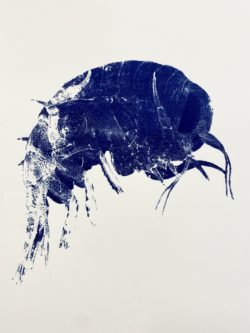 Among the many findings of the report is an assessment of the great abundance and variety of benthic species and subspecies living in the fjord. Maria Sjöfn made images of some of these animals — including crustaceans, gastropods, mollusks, bivalves, and Nemertea — to draw attention to their existence; for despite the fact that they are not always visible, they are nonetheless present and vital to the ecology of the fjord.
Among the many findings of the report is an assessment of the great abundance and variety of benthic species and subspecies living in the fjord. Maria Sjöfn made images of some of these animals — including crustaceans, gastropods, mollusks, bivalves, and Nemertea — to draw attention to their existence; for despite the fact that they are not always visible, they are nonetheless present and vital to the ecology of the fjord.
The project relates to a fundamental aspect of Maria Sjöfn’s practice, in which she explores the nature of relationships between human and non-human life. The fjord is a fragile ecosystem, and the decisions humans make about introducing new species into the marine environment would undoubtedly have consequences.
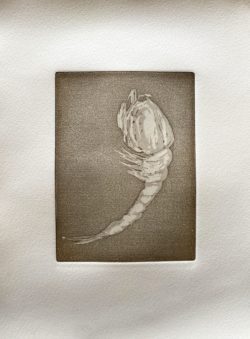
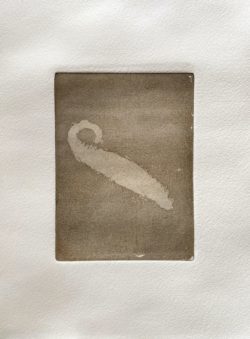
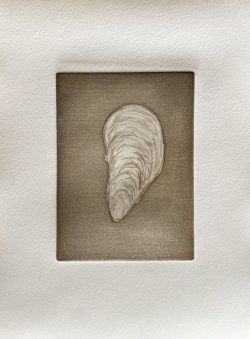
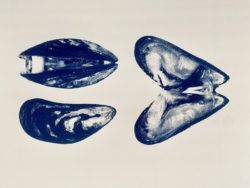
List of illustrations:
Seyðisfjörður MKV – scale: 1:25000. Risoprent í upplagi af 20 (Riso print, of 20)Meðalfjöldi hópa/tegunda á stöðvum sem liggja til grundvallar fyrir útreikninga á fjölbreytni botndýra í Seyðisfirði. (Average number of groups/species at base stations)
Amphipoda – marfló. Silkiprent í upplagi af 10 (Silkscreen print, edition of 10)
Cumacea – pungrækja. Æting prent í upplagi af 10 (Etching, edition of 10)
Nemertea – Ranaormar. Æting prent í upplagi af 10 (Etching, edition of 10)
Bivalvia – Samlokur. Æting prent í upplagi af 10 (Etching, edition of 10)
Blue mussel – bláskel. Silkiprent í upplagi af 30 (Silkscreen print, edition of 30
